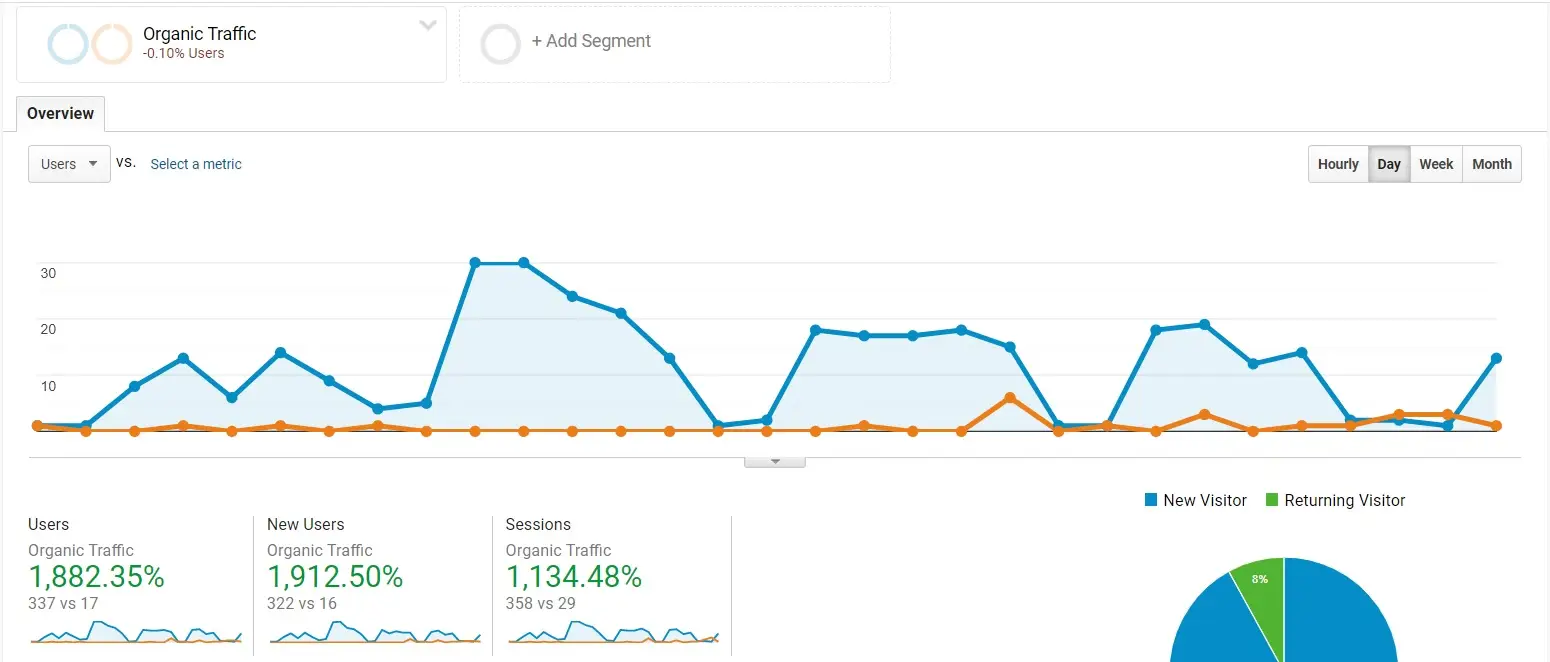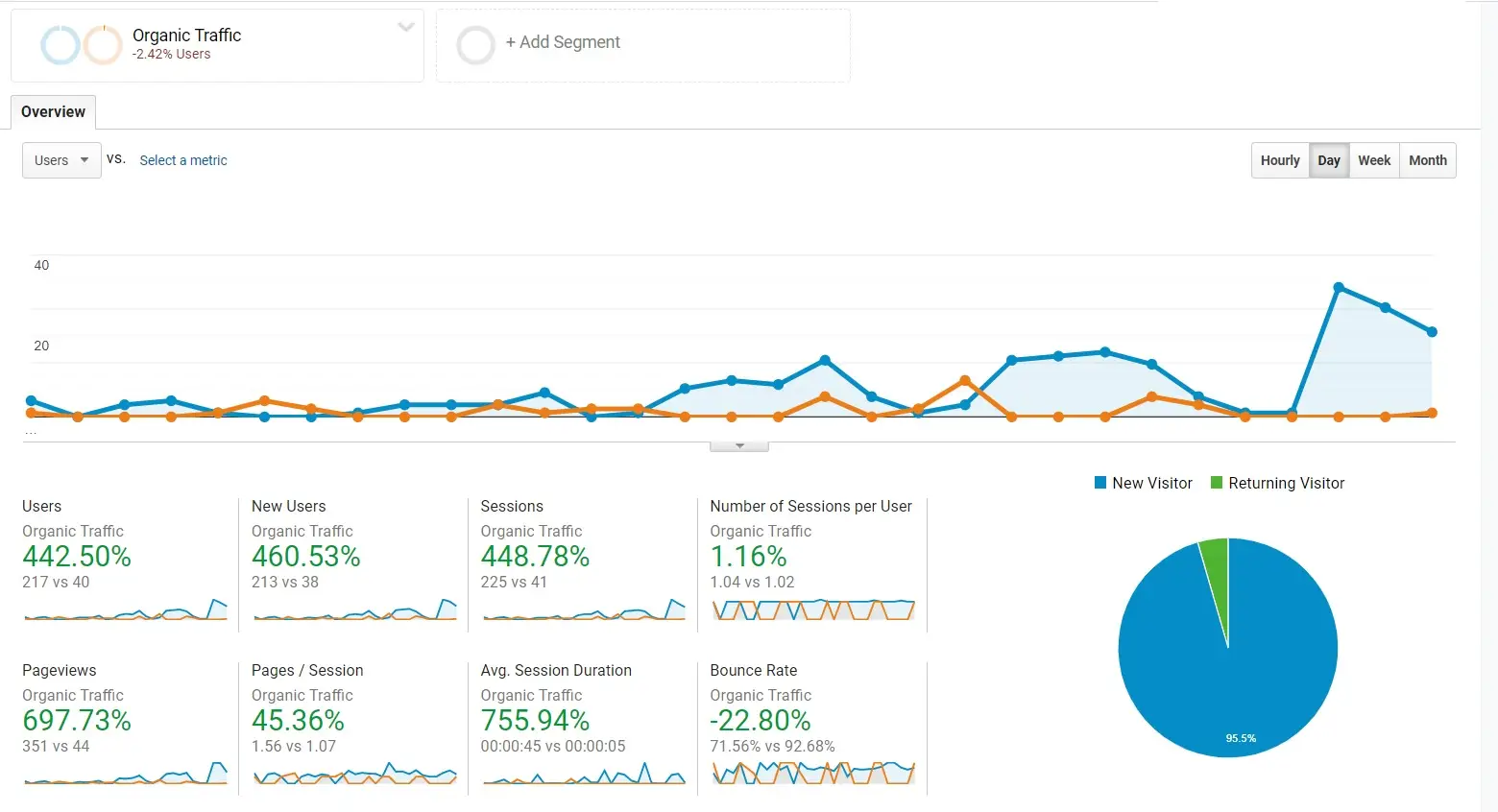Unlocking Success with Long-Tail Keywords
1. The Importance of Long-Tail Keywords in SEO
1.1 Driving Targeted Traffic to Your Website
Long-tail keywords are pivotal for driving targeted traffic to websites, especially for businesses aiming to connect with specific audiences. Unlike broad search terms, which may yield high traffic but attract users with varying intents, long-tail keywords cater to individuals who are often further along in their buying journey. For instance, a user searching for “best vegan protein powder” is likely ready to make a purchase, compared to someone simply searching for “protein powder.” This specificity not only increases the chances of conversion but also helps businesses attract visitors who are genuinely interested in their products or services. Therefore, incorporating long-tail keywords into content strategies can significantly enhance website visibility and user engagement.
1.2 Understanding the Difference: Long-Tail vs. Short-Tail Keywords
The key difference between long-tail and short-tail keywords lies in their specificity and competition level. Short-tail keywords, such as “shoes,” generally have high search volumes but also come with fierce competition. Established brands with high domain authority typically dominate these keywords, making it difficult for new players to rank. In contrast, long-tail keywords, like “best running shoes for flat feet,” tend to have lower search volumes but significantly less competition. This lower competition means that smaller websites or newer businesses can achieve higher rankings more quickly. By focusing on long-tail keywords, businesses can carve out a niche in their industry, allowing them to compete effectively against larger competitors.
1.3 Navigating the Challenges of SERP Rankings
Achieving a top ranking in search engine results for short-tail keywords can be a daunting task, requiring considerable resources, including quality backlinks and authoritative content. In contrast, long-tail keywords often present a more attainable goal, especially for new websites or those with limited SEO capabilities. For instance, a small athletic shoe retailer might find it almost impossible to rank for the generic term “running shoes,” but could successfully rank for the more specific phrase “comfortable running shoes for beginners.” This ability to rank for specific terms not only helps businesses improve their search visibility but also allows them to attract a more engaged audience that is likely to convert.
1.4 Unlocking Opportunities for Organic Growth
Long-tail keywords offer substantial potential for organic search growth, particularly because they align closely with user intent. Content optimized for these specific phrases tends to attract visitors who are looking for detailed information or solutions, leading to higher engagement rates. For example, an article titled “How to Choose the Best Running Shoes for Your Foot Type” addresses a particular query that users might have. Such targeted content can result in sustained traffic over time, as it consistently meets the needs of users searching for specific information. As a result, optimizing for long-tail keywords can lead to a steady influx of organic visitors, ultimately enhancing a website’s authority and relevance in its niche.
1.5 Defining Long-Tail Keywords: What You Need to Know
Long-tail keywords are specific phrases that typically consist of three or more words. They are designed to reflect the actual search behavior of users, focusing on particular topics or queries. For example, “best laptops for graphic design under $1000” is a long-tail keyword that targets a very specific audience. These keywords are characterized by their ability to capture niche interests and intents, allowing businesses to create highly relevant content. Understanding the definition and features of long-tail keywords is crucial for developing an effective SEO strategy, as these keywords can significantly enhance content relevance and user satisfaction.
1.6 Analyzing Search Volume and User Queries
While long-tail keywords usually have lower search volumes compared to their short-tail counterparts, they can provide invaluable insights into user behavior and preferences. Analyzing these keywords can reveal what users are genuinely interested in and what specific questions they are asking. For instance, a keyword research tool might show that “best running shoes for flat feet” has a modest search volume but consistently ranks high in user inquiries. By focusing on these keywords, businesses can tailor their content strategies to address specific user needs, ultimately enhancing engagement and building trust with their audience.

2. Identifying High-Impact Long-Tail Keywords
2.1 Making the Most of Keyword Research Tools
Keyword research tools play an essential role in identifying effective long-tail keywords for content strategy. Tools like Google Keyword Planner, SEMrush, and Ahrefs provide critical data on search volume, keyword difficulty, and related terms. By using these tools, businesses can pinpoint long-tail phrases that align with their target audience’s search behavior. For example, using SEMrush might reveal that “best hiking shoes for women” has a reasonable search volume and manageable competition, making it an attractive target for optimization. By leveraging these insights, marketers can create content that directly addresses user interests, improving their chances of ranking in search results.
2.2 Reviewing Your Search Query Data
Analyzing search query reports in Google Search Console is another effective method for uncovering long-tail keywords. This approach allows businesses to see which specific queries are currently driving traffic to their site. By understanding which long-tail keywords yield results, companies can identify content gaps and areas for expansion. For instance, if data shows that users are searching for “best running shoes for flat feet” and landing on your site, you might consider creating a dedicated blog post or guide to capitalize on that interest. This analytical approach ensures that content creation aligns with actual user behavior, enhancing relevance and engagement.
2.3 Utilizing Google’s “People Also Ask” Feature
The “People Also Ask” (PAA) feature in Google search results provides a treasure trove of information regarding user queries. This section displays related questions that users frequently ask alongside their primary search term. By identifying these related queries, businesses can create targeted content that addresses specific user concerns. For instance, if a user searches for “best running shoes,” they might see PAA results like “What are the best running shoes for beginners?” or “How often should you replace running shoes?” Crafting content that directly answers these questions can improve the likelihood of appearing in the PAA section, increasing visibility and traffic.
2.4 Engaging with Forums and Q&A Platforms
Engaging with forums and Q&A platforms such as Reddit and Quora can provide deep insights into what users are discussing in your niche. These platforms are valuable for identifying common questions, pain points, and interests. For instance, if you run a fitness website, exploring relevant subreddits can reveal frequent inquiries about workout gear or nutrition tips. By analyzing these discussions, you can uncover potential long-tail keywords and topics that resonate with your audience. Participating in these communities not only helps you gather keyword ideas but also establishes your authority in the space, as you can provide valuable insights and answers based on your expertise.

3. Optimizing Your Content for Long-Tail Keywords
3.1 Strategically Using Exact Keyword Phrases
Incorporating exact long-tail keyword phrases in your content is critical for effective optimization. Including these phrases in strategic locations, such as the title, headings, and introductory paragraph, signals to search engines that your content is relevant to specific queries. For example, if your target keyword is “best hiking boots for women,” you should ensure that this phrase appears prominently in your article. This practice not only helps improve SEO but also makes your content more aligned with user searches, enhancing the overall user experience.
3.2 Utilizing Variations and Synonyms
Utilizing synonyms and variations of your target long-tail keywords can help capture a broader audience while keeping your content engaging. By weaving in alternative phrases, such as “top hiking shoes” or “women’s outdoor boots,” you can diversify your content and improve its relevance to different search queries. This approach allows you to attract users who might use slightly different wording while still seeking similar information. Additionally, a natural flow in your writing can prevent keyword stuffing, ensuring a better reading experience.
3.3 Optimizing Based on Search Intent
Optimizing your content based on search intent is crucial for enhancing relevance and user satisfaction. Understanding whether users are seeking information, products, or solutions can help shape your content accordingly. For instance, if someone searches for “how to train for a marathon,” they are likely looking for a comprehensive guide rather than just product recommendations. Tailoring your content to address these specific intents will improve user engagement and increase the likelihood of conversions, as visitors find the information they need.
3.4 Building a Strong Internal Linking Structure
Internal linking is a vital strategy for improving site navigation and enhancing the relevance of your articles. By linking to related content, you guide users to additional resources and establish context for search engines. For example, if you have a blog post on “how to choose the right running shoes,” you could link to another post about “top running shoe brands.” This not only keeps users on your site longer but also signals to search engines the relationships between your content, which can enhance overall SEO performance.

4. The Advantages of Long-Tail Keywords
4.1 Enjoying Reduced Competition
One of the primary advantages of long-tail keywords is the reduced competition they face compared to short-tail keywords. Because long-tail keywords are more specific, they often attract a narrower audience, leading to less competition from other websites. This dynamic allows smaller businesses and newer websites to rank for these keywords more easily. For instance, a new boutique selling eco-friendly products may find it challenging to compete for the general term “eco-friendly products” but could successfully rank for “best eco-friendly yoga mats for beginners.” This ability to achieve higher rankings translates into increased visibility and traffic.
4.2 Achieving Greater Visibility in Search Results
Optimizing for long-tail keywords can lead to enhanced visibility in search rankings. As businesses focus on specific phrases, they increase their chances of appearing in search results that align with those queries. Over time, consistently ranking for these targeted keywords can build domain authority, establishing a website as a trusted resource in its niche. For instance, a gardening blog that consistently ranks for long-tail keywords related to “organic vegetable gardening” can attract a dedicated audience interested in sustainable gardening practices, enhancing its overall online presence.
4.3 Building Authority in Your Niche
Focusing on long-tail keywords allows businesses to position themselves as authorities in their specific niches. By creating high-quality content that addresses targeted queries, companies can establish credibility and trust with their audience. For example, a website dedicated to healthy cooking can create in-depth guides on “easy vegetarian recipes for busy families,” attracting users seeking practical solutions. This authority not only fosters customer loyalty but also encourages users to share content, amplifying reach through organic means.
4.4 Enhancing the User Experience
Ultimately, optimizing for long-tail keywords contributes to a better user experience. By providing content that aligns with specific user queries, businesses can offer valuable information and solutions that meet user needs. When visitors find exactly what they’re looking for, they are more likely to engage with the content, share it, and return for future visits. This positive user experience can lead to higher conversion rates and improved customer satisfaction, reinforcing the importance of incorporating long-tail keywords into SEO strategies.
4.3 Understanding Audience Behavior
Long-tail keywords provide valuable insights into audience behavior and preferences. By analyzing which specific phrases users search for, businesses can uncover what their audience is genuinely interested in. For instance, if a health blog notices increased searches for “natural remedies for seasonal allergies,” it can tailor its content to address this interest, fostering a deeper connection with its audience. This understanding not only enhances content relevance but also positions businesses to anticipate and meet user needs more effectively.
4.4 Comparison of Long-Tail and Head Keywords
While long-tail keywords are specific phrases typically consisting of three or more words, head keywords are shorter, broader terms often made up of one or two words. For example, “shoes” is a head keyword, while “best running shoes for women” is a long-tail keyword. The primary distinction lies in competition and intent: head keywords face high competition and cater to a general audience, while long-tail keywords attract more targeted traffic and cater to specific user intents. This comparison underscores the strategic value of long-tail keywords in crafting a successful SEO approach.
4.5 Significance of Search Intent in Content Development
Search intent plays a crucial role in content development, particularly when using long-tail keywords. Understanding whether users seek information, products, or solutions allows businesses to tailor their content accordingly. For instance, a search for “how to fix a leaky faucet” indicates that users are looking for a DIY guide rather than product recommendations. By aligning content with search intent, businesses can enhance user engagement, improve satisfaction, and increase the likelihood of conversions, making it vital to consider intent when developing content strategies.
4.6 Contribution to Organic Traffic Generation
Long-tail keywords contribute significantly to organic traffic generation. By targeting specific phrases that align with user queries, businesses can attract highly relevant traffic to their sites. For instance, a blog post optimized for “easy vegan dinner recipes” is likely to draw visitors specifically searching for that type of content. Over time, consistently optimizing for long-tail keywords can lead to a steady stream of organic traffic, enhancing overall site authority and visibility in search engine results.
4.7 Increased Conversion Rates
One of the most compelling advantages of long-tail keywords is their potential to increase conversion rates. Because these keywords attract users with specific needs or intents, the likelihood of conversion is higher. For example, someone searching for “best hiking boots for narrow feet” is likely closer to making a purchase than someone simply searching for “hiking boots.” By catering to these specific user intents through long-tail keyword optimization, businesses can create more effective conversion funnels, ultimately leading to higher sales and customer satisfaction.
4.8 Cost-Effectiveness Relative to Paid Advertising
Investing in long-tail keyword strategies is often more cost-effective than relying solely on paid advertising. While PPC campaigns can yield immediate visibility, they can also be expensive and require ongoing investment. In contrast, optimizing for long-tail keywords can result in organic traffic that continues to grow over time without recurring costs. For small businesses or startups with limited budgets, focusing on long-tail keywords can provide a more sustainable path to achieving online visibility and driving traffic.
4.9 Grasping User Search Motivations
Understanding user search motivations is essential for developing effective content. Long-tail keywords reveal the specific questions and concerns that users have, providing insights into what drives their searches. By analyzing these motivations, businesses can create targeted content that addresses user needs. For example, a user searching for “best laptops for graphic design students” is motivated by a desire for performance and budget considerations. By addressing these motivations in content, businesses can enhance relevance and user satisfaction.
4.10 Better Suited for Voice Search
As voice search continues to rise in popularity, long-tail keywords are becoming increasingly important. Users tend to ask longer, more conversational questions when using voice search compared to text-based searches. For instance, instead of typing “best coffee maker,” a user might say, “What is the best coffee maker for making lattes?” Optimizing for these longer phrases enhances the likelihood of appearing in voice search results, positioning businesses to meet the evolving needs of users.
4.11 Accelerated Ranking for New Content
Long-tail keywords can facilitate faster ranking for new content compared to broader terms. Because long-tail keywords typically face less competition, new articles optimized for these phrases have a greater chance of achieving visibility quickly. For example, a newly launched website could find it challenging to rank for “running shoes” but may easily achieve rankings for “best trail running shoes for beginners.” This ability to rank quickly for specific queries allows businesses to establish their presence in search engines sooner, driving initial traffic to their site.

5. Tactics for Implementing Long-Tail Keywords
5.1 Grasping Buyer Personas
Understanding your buyer personas is essential for identifying the right long-tail keywords to target. By analyzing the demographics, preferences, and behaviors of your audience, you can determine which specific phrases will resonate with them. For instance, a buyer persona for a skincare brand may include young adults searching for “affordable anti-aging creams.” Tailoring your keyword strategy to these personas ensures that your content speaks directly to your target audience, increasing relevance and engagement.
5.2 Accounting for Search Intent
It’s crucial to account for search intent when implementing long-tail keywords. Determine whether users are looking for informational, transactional, or navigational content. By aligning your content with the specific intent behind the search, you can enhance user satisfaction and increase the chances of conversion. For example, if users are searching for “how to choose a mountain bike,” they are likely looking for a guide rather than a product pitch, so crafting an informative article will be more effective.
5.3 Crafting Compelling Content
Creating high-quality, compelling content that addresses the needs of your audience is vital for long-tail keyword implementation. Your content should provide valuable information, answer questions, and solve problems. For example, a blog post titled “10 Tips for Choosing the Right Running Shoes” can effectively incorporate long-tail keywords while delivering actionable insights. Engaging content not only improves SEO but also enhances user experience, encouraging readers to share and return for more.
5.4 Optimal Applications: Blogs, Product Descriptions, FAQs, Case Studies, Tutorials
Long-tail keywords are particularly effective in various content formats. Blogs can delve into specific topics, product descriptions can highlight unique features, FAQs can address common inquiries, case studies can showcase successful applications, and tutorials can provide step-by-step guidance. Each of these formats offers opportunities to optimize for long-tail keywords, allowing businesses to meet diverse user needs and enhance search visibility.
5.5 Less Effective Applications: Homepages, Brand Pages
While long-tail keywords are valuable, they may not always be suitable for homepage or brand page optimization. These pages typically serve broader purposes and attract diverse traffic, making it challenging to effectively incorporate long-tail keywords. Instead, these pages should focus on broader terms while supporting long-tail keyword strategies through linked content. For example, a homepage may target “outdoor gear” while individual product pages focus on long-tail keywords like “best hiking gear for beginners.”
5.6 Start Small and Build Momentum
When implementing long-tail keywords, it’s wise to start small and gradually build momentum. Focus on a few targeted keywords that align with your audience’s needs and preferences. As you create content around these keywords and gain traction, you can expand to additional long-tail keywords. This incremental approach allows you to refine your strategy based on performance and user engagement, leading to more effective results over time.
5.7 Maintain Relevance and Expand Your Online Presence
Consistency is key in maintaining relevance and expanding your online presence with long-tail keywords. Regularly update existing content and create new articles that address evolving user interests and search trends. For example, if a long-tail keyword related to “vegan meal prep for beginners” gains traction, you could create a series of blog posts and resources around this topic. Staying current not only improves SEO but also helps build a loyal audience.
5.8 Set Clear Objectives
Establishing clear objectives for your long-tail keyword strategy is essential for measuring success. Determine what you want to achieve, whether it’s increasing website traffic, improving conversion rates, or building brand authority. By setting specific, measurable goals, you can assess the effectiveness of your long-tail keyword implementation and make necessary adjustments to your strategy.
5.9 Conduct Comprehensive Research
Thorough research is crucial for identifying the right long-tail keywords to target. Utilize keyword research tools, analyze competitors, and review search trends to uncover potential keywords that resonate with your audience. Comprehensive research allows you to develop a well-informed keyword strategy, ensuring that your content aligns with user interests and enhances visibility.
5.10 Combine Related Keywords
Combining related long-tail keywords can amplify your content strategy. By identifying keywords that share similar themes or topics, you can create comprehensive articles that address multiple queries. For instance, a blog post on “how to choose running shoes” could incorporate related long-tail keywords like “running shoes for flat feet” and “best running shoes for marathons.” This approach improves content depth and relevance, enhancing user experience and SEO performance.
5.11 Cluster Similar Articles
Creating clusters of related articles can enhance your SEO strategy by establishing topical authority. By grouping content around central themes, you can create a more comprehensive resource for users. For instance, a series of articles on “different types of running shoes” can collectively cover various long-tail keywords, improving internal linking and helping search engines understand your site’s relevance. This clustering technique not only enhances SEO but also provides users with valuable, interconnected content.
5.12 Focus on On-Page Optimization
On-page optimization is critical for maximizing the effectiveness of your long-tail keyword strategy. Ensure that target keywords are included in key areas such as titles, headings, meta descriptions, and throughout the content. Additionally, optimize images, use appropriate alt tags, and enhance loading speed to improve user experience. By focusing on on-page optimization, you can increase your chances of ranking higher for your chosen long-tail keywords.

6. Tools for Uncovering Long-Tail Keywords
Identifying effective long-tail keywords is essential for crafting targeted content and enhancing SEO strategies. Here are some valuable tools to help you discover those keywords:
1. Google “Related Searches…”
At the bottom of Google search results, you’ll find a section titled “Related Searches.” This feature provides insights into other search queries that users are interested in, offering a rich source of long-tail keywords. By analyzing these related terms, you can uncover variations and specific phrases that align with user intent.
2. Semrush Keyword Magic Tool
Semrush’s Keyword Magic Tool is a robust resource for keyword research. It allows users to enter a seed keyword and explore a comprehensive list of related long-tail keywords, along with metrics such as search volume, keyword difficulty, and trends. This tool is especially useful for identifying keyword clusters and discovering untapped opportunities.
3. Answer The Public
Answer The Public is a visual keyword research tool that generates questions and phrases related to your keyword. By entering a topic, you receive a range of questions that users are asking, segmented into categories such as “what,” “how,” and “where.” This helps you identify long-tail keywords that address specific user queries and concerns.
4. Reddit
Reddit can be a goldmine for understanding user interests and language. By exploring relevant subreddits related to your niche, you can identify common questions, discussions, and topics that users are passionate about. Analyzing these conversations can inspire long-tail keywords that resonate with your target audience.
5. Google Keyword Planner
Google Keyword Planner is a classic tool for keyword research, especially for those investing in Google Ads. While it provides insights primarily for paid campaigns, it’s also useful for organic search. You can enter a keyword to discover related long-tail keywords, their search volumes, and trends, helping you identify potential content opportunities.
6. Ahrefs’ Site Explorer
Ahrefs’ Site Explorer allows you to analyze competitor websites and discover which long-tail keywords they rank for. By entering a competitor’s URL, you can see their top-performing pages and the keywords driving traffic to them. This insight helps you identify gaps in your own keyword strategy and uncover new long-tail opportunities.
7. Online Forums and Boards
Exploring online forums and message boards related to your industry can provide valuable insights into user interests and concerns. Platforms like Quora, Stack Exchange, and niche-specific forums often feature questions and discussions that highlight common long-tail search queries. Participating in these communities can also foster engagement and establish your authority.
8. Google Autocomplete
Google Autocomplete is a simple yet effective tool for discovering long-tail keywords. As you type a query into the Google search bar, suggestions appear based on popular searches. These autocomplete suggestions can reveal specific long-tail keywords that users are actively searching for, providing valuable ideas for content creation.
9. Soovle
Soovle aggregates autocomplete suggestions from multiple search engines, including Google, Bing, YouTube, Amazon, and more. By entering a keyword, you receive suggestions from various platforms, giving you a broad perspective on long-tail keywords across different search engines. This can be particularly useful for content that spans multiple formats or platforms.
10. Google Search Console Insights
Google Search Console Insights provides valuable data about your website’s performance, including which keywords are driving traffic. By reviewing the queries that bring users to your site, you can identify potential long-tail keywords to target in future content. This tool helps you optimize your existing content and discover areas for improvement.
11. Google Trends
Google Trends is a powerful tool for analyzing the popularity of search queries over time. By entering a long-tail keyword, you can see its search volume trends, regional interest, and related topics. This information helps you understand the seasonality and relevance of specific long-tail keywords, allowing you to plan your content accordingly.
12. Quora
Quora is a Q&A platform where users pose questions on various topics. By searching for your niche-related queries, you can uncover long-tail keywords based on what people are asking. The answers provided by users often highlight specific terms and phrases, offering insights into the language and concerns of your target audience.


